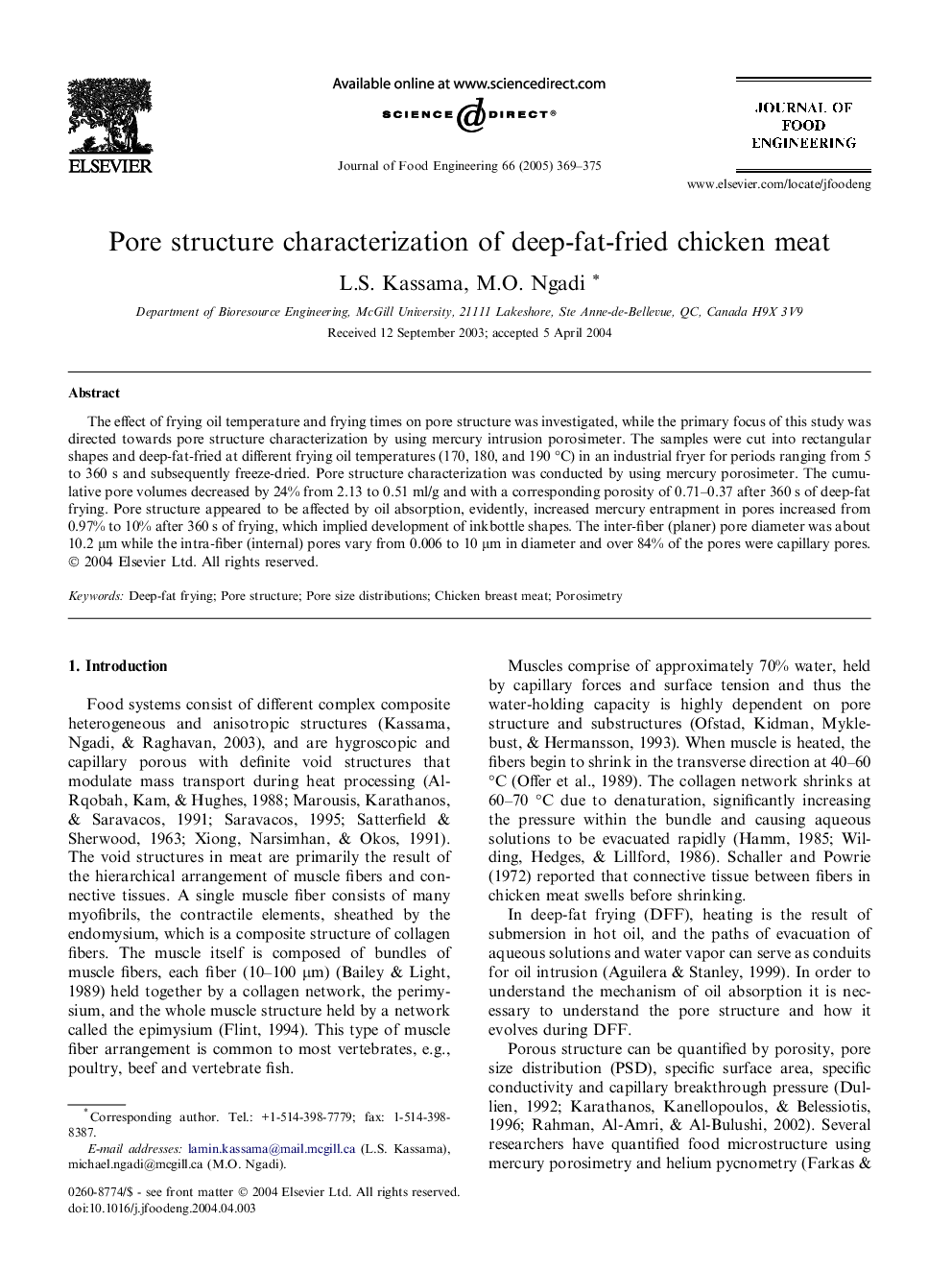| Article ID | Journal | Published Year | Pages | File Type |
|---|---|---|---|---|
| 10278191 | Journal of Food Engineering | 2005 | 7 Pages |
Abstract
The effect of frying oil temperature and frying times on pore structure was investigated, while the primary focus of this study was directed towards pore structure characterization by using mercury intrusion porosimeter. The samples were cut into rectangular shapes and deep-fat-fried at different frying oil temperatures (170, 180, and 190 °C) in an industrial fryer for periods ranging from 5 to 360 s and subsequently freeze-dried. Pore structure characterization was conducted by using mercury porosimeter. The cumulative pore volumes decreased by 24% from 2.13 to 0.51 ml/g and with a corresponding porosity of 0.71-0.37 after 360 s of deep-fat frying. Pore structure appeared to be affected by oil absorption, evidently, increased mercury entrapment in pores increased from 0.97% to 10% after 360 s of frying, which implied development of inkbottle shapes. The inter-fiber (planer) pore diameter was about 10.2 μm while the intra-fiber (internal) pores vary from 0.006 to 10 μm in diameter and over 84% of the pores were capillary pores.
Related Topics
Physical Sciences and Engineering
Chemical Engineering
Chemical Engineering (General)
Authors
L.S. Kassama, M.O. Ngadi,
